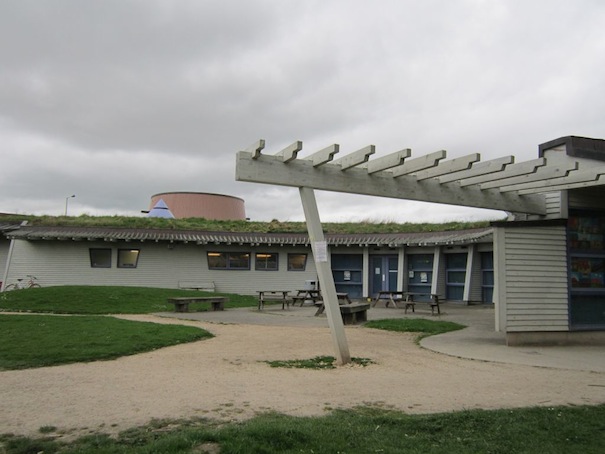In the medieval period Red Kites were abundant, both in towns and rural areas. They enjoyed protection by Royal decree: this changed in the mid-16th century, when they became categorised as vermin and were systematically slaughtered; by the turn of this century a mere handful of pairs survived in the more remote valleys of Wales.
When I first moved to rural West Wales, in the 1970’s, Red Kites were simply unheard of. After a sojourn abroad, I came back to a small village in the Cothi Valley in Carmarthenshire in 2000. The Tywy and Cothi Valleys were the two areas of Wales where the mere handful of Red Kites had survived and, against all the odds, had been breeding successfully and their numbers were on the rise. Initially there would be just an occasional glimpse of one of these sleek, beautiful birds – so elegant and aerodynamic compared to their dumpy cousins, the buzzard – but gradually sightings increased, culminating in a wonderful sight in 2006. I drove up my farm lane and saw approximately 40 of these magnificent birds swooping and circling in the sky above my farmhouse.
 After moving to Shropshire, Red Kites dropped off my radar until a few weeks ago, when I heard of a feasibility study being conducted into the establishment of a Red Kite Feeding Station at the Shropshire Hills Discovery Centre in Craven Arms, so I went along to learn more. I discovered there had been no breeding population in the Shropshire Hills since 1876 . In 2006 one breeding nest was found and by last year 82 nests had been identified and at least 125 young Red Kites had flown from those nests – a resident population is becoming established in the Shropshire Hills.
After moving to Shropshire, Red Kites dropped off my radar until a few weeks ago, when I heard of a feasibility study being conducted into the establishment of a Red Kite Feeding Station at the Shropshire Hills Discovery Centre in Craven Arms, so I went along to learn more. I discovered there had been no breeding population in the Shropshire Hills since 1876 . In 2006 one breeding nest was found and by last year 82 nests had been identified and at least 125 young Red Kites had flown from those nests – a resident population is becoming established in the Shropshire Hills.
So, why set up a Red Kite Feeding Station? There are three possible reasons. First, conservation: to help increase the population of this scarce, vulnerable species. One-third of Kites die in their first year and only 40% live until 3 years old, the average age of first breeding. The small supplement to their natural food provided by a feeding station should increase their survival rates, especially during winter. Second, education: to introduce people to this spectacular member of our local wildlife, and finally, economic: to increase tourism for the benefit of the local economy. There are few spectacles that can compete with seeing Red Kites at close quarters. I decided to put this last reason to the test, so took myself off to Gigrin Farm in Rhayader, Powys.
High up in the hills above Rhayader Gigrin Farm is a 200 acre sheep farm, owned by the Powell family. Eithel Powell had fed a small population of Red Kites for years, which he could safely do as the birds pose no threat to livestock. In 1993 the RSPB asked him to establish a Red Kite feeding station. Initially it attracted a dozen or so Kites, now well over 400 visit, although the numbers fluctuate between summer and winter. The farm is also a rehabilitation centre for Red Kites; injured birds are nursed back to health and are often released into other areas to help re-population efforts – a recent batch went to Ireland.
I paid my £4.50 and joined dozens of people, festooned with cameras, in the specially built hides. At 3pm, a red tractor drove into the field – lunch was about to be served. Notices on the hide wall informed us that the Kites would only feed if rooks and crows were present: a rookery bounded this field. The tractor drew up and the meat was distributed, the rooks descended onto the field and then, from nowhere, hundreds of Red Kites appeared, circling above the field, then making lightening swoops to gather up morsels of meat in their talons. The meat was consumed on the wing. The rooks were on the ground, solidly tucking in, but the Red Kites’ feeding was executed entirely on the wing, with magnificent grace and dexterity. At one point the rooks took off en masse to their rookery and in an instant al the Kites left too, to reappear as soon as the rooks came back for seconds.
Having seen the awesome display at Gigrin, I earnestly hope we will get a Red Kite feeding centre at the Shropshire Hills Discovery Centre, which is the main contender as other potential sites in Shropshire have been investigated and abandoned. A Kite feeding station would be a good adjunct to the facilities already on offer at The Discovery Centre. The centre has parking, a very good café, an interesting exhibition and a good gift shop. The grounds are excellent for dog-walking, picnics and paddling in the Onny River. Stokesay Castle and The Museum of Lost Content are also in Craven Arms, so you can make a really good day out of it!
– Jean de Rusett
Shropshire Hills Discovery Centre, School Road, Cravens Arms, SY7 9RZ Tel: 01588 676060
Gigrin Farm Red Kite Feeding Station, South Street, Rhayader, Powys, LD6 5BL Tel: 01597 810243








